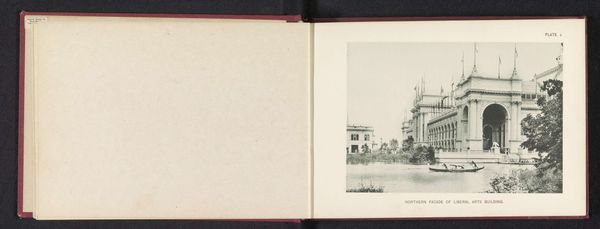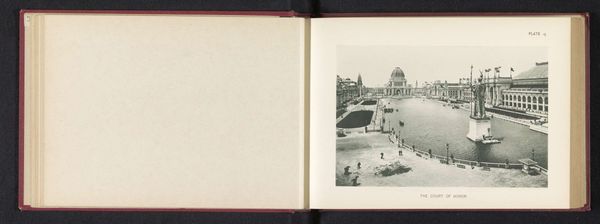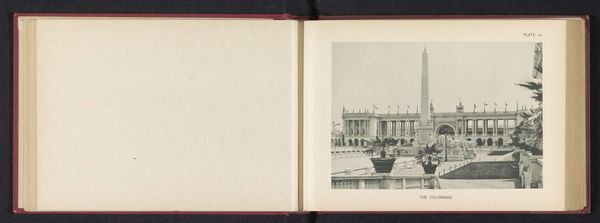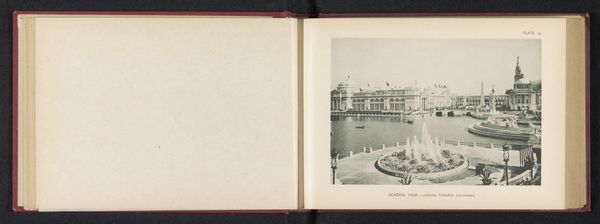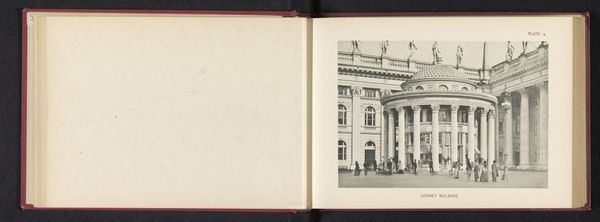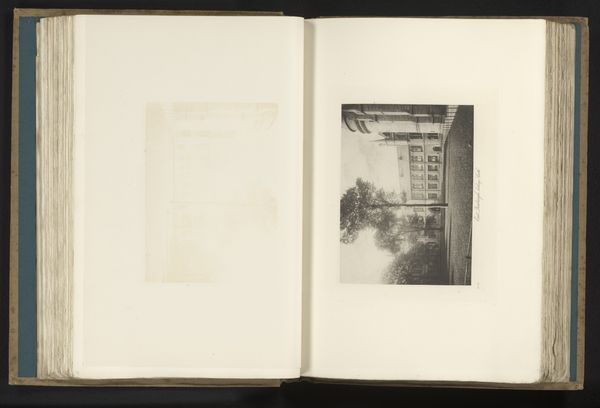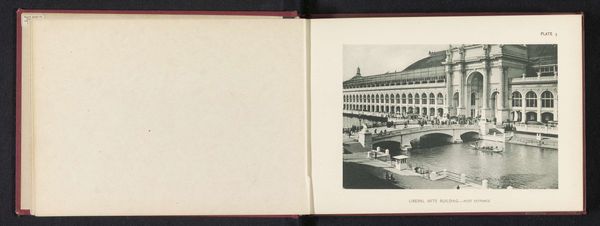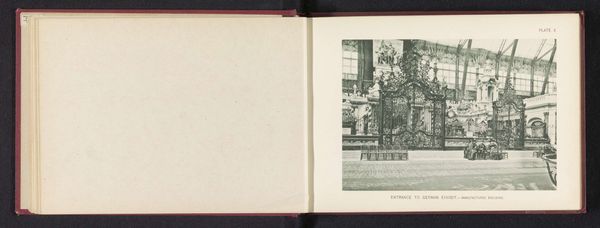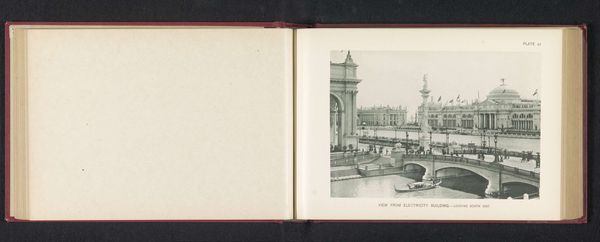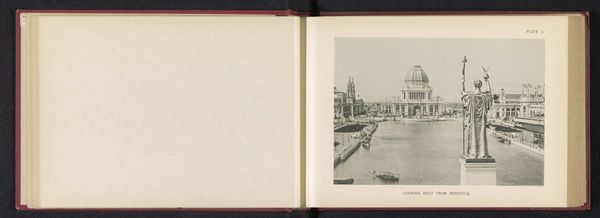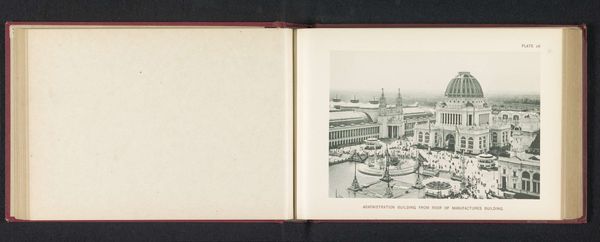
Gezicht op de toegangspoort met zuilengalerij van de World's Columbian Exposition in Chicago in 1893 1893
0:00
0:00
Dimensions: height 132 mm, width 191 mm
Copyright: Rijks Museum: Open Domain
Curator: What we're looking at here is a photographic print by Charles Dudley Arnold, taken in 1893. It's titled, "Gezicht op de toegangspoort met zuilengalerij van de World's Columbian Exposition in Chicago in 1893", which translates to "View of the Gateway with colonnade of the World's Columbian Exposition in Chicago in 1893". Editor: Immediately, I'm struck by the ambition and the...well, the propaganda... inherent in depicting this kind of monumental, idealized civic space. There’s a crispness to the photograph but the perspective flattens everything. Curator: The Exposition itself was designed as a grand demonstration of American progress and ingenuity, a carefully constructed vision of what the future could hold. Understanding it means thinking about it as a curated, performative space. The buildings, grand as they were, were temporary, built of staff and plaster, earning it the nickname "The White City". Editor: Precisely. That temporality speaks volumes. It suggests the deliberate creation of an ephemeral dream. It’s impossible to divorce it from questions of race, class, and power. The Columbian Exposition celebrated a very specific, exclusionary vision of progress, and one that glossed over the realities of racial injustice and inequality prevalent in America at the time. I imagine we would see quite another view of this Exposition and of Chicago from another kind of artist, or someone on the outside of its promised "progress." Curator: Absolutely. Think about what voices were silenced or marginalized in that vision. Whose stories weren't being told? This image really becomes more potent when considering the politics of representation involved. It promotes one image of American greatness, effectively pushing others into the margins. Photography itself was used as a tool of power, constructing a certain narrative for public consumption. Editor: It’s like a hyperreal fantasy playing out on a massive scale. Examining these meticulously constructed environments becomes a means of unveiling the narratives that were carefully curated, while also revealing the critical absences that were actively obscured. It is like a facade erected by the state and for the state. Curator: In understanding imagery of civic events and art’s public role we learn so much about a culture’s power dynamics, priorities and how it sells itself to the world and its own citizens. Editor: It becomes a vital project in demystifying visual rhetoric and promoting critical thinking about art's social function.
Comments
No comments
Be the first to comment and join the conversation on the ultimate creative platform.
